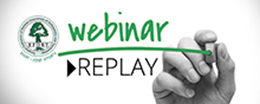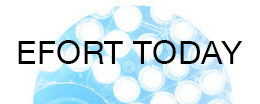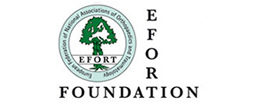The idea of creating an organisation to link all the national orthopaedic associations in Europe began life in a Committee which primary function was to organise a single Combined Meeting of these associations to mark the creation of the European Single Market in 1993.
The concept of such a Combined European Meeting can be traced back to a meeting of the International Hip Society (IHS) in New York in April 1989 when the idea was discussed with a number of French surgeons who were also members of that society. Later that year, at a Course held at the Royal College of Surgeons of England, Michael Freeman and Jacques Duparc had more discussions to develop this further. In the fist instance the forum moved to the COCOMAC (Commité des Sociétés d’Orthopédie du Marché Commun), an organisation which linked a number of European national associations to provide instructional opportunities, where it was quickly decided to hold a Combined Meeting early in 1993 in Paris.
Happily, the SOFCOT (Société Française de Chirurgie ‘Orthopédique et Traumatologie) agreed to underwrite the costs of the Meeting. Accordingly, a Steering Committee composed of the Presidents of all the west European (not just European Union) national associations of orthopaedics and traumatology was set up under my chairmanship. It appointed a Programme Chairman and co-operated with SOFCOT which provided the local organisation. It soon emerged, however, that in this Committee there was support for the creation of a continuing organisation which might arrange subsequent meetings and carry out various other functions.
The Steering Committee met in Northern Italy in early 1992 and again in Munich in May 1992. At these meetings, the Statutes for a possible organisation were evolved and broad decisions were taken as to its nature and its objectives. Consideration was given to the possibility of creating an organisation modelled on the American Academy of Orthopaedic Surgeons (AAOS) ; individual orthopaedic surgeons in Europe would have the opportunity of joining the new organisation if they wished, in addition to membership of their national associations. It was felt however, that an entirely new organisation on those lines would not be wholly appropriate since it might conflict with the activities of the national associations and would create considerable administrative burdens on the organisers. The alternative was preferred therefore of linking the national associations into a co-operative entity to be called a “Federation”. The title of this organisation was eventually agreed as “The European Federation of National Associations of Orthopaedics and Traumatology” (EFORT).
EFORT was to have a General Assembly composed of two delegates from each participating nation. Where more than one national association existed within any one country (e.g. Belgium) one delegate was to come from each association. The General Assembly is ultimately legally responsible for the activities of the Federation. It meets once a year and its main function is to elect an Executive Board which is in turn responsible for the day-to-day running of the Federation.
The Executive Board reports to each meeting of the General Assembly which of course has the right to dismiss the Board and appoint an alternative. It was agreed that all broad policy initiatives would require the approval of the General Assembly, as would the Annual Budget. The Executive Board is chaired by the President who holds office for two years. The Vice-President is similarly appointed for two years with the understanding that he will normally become the President at the end of his period of office. Although this is the usual sequence, an alternative candidate may be proposed, necessitating an election. The Vice-President is elected by the General Assembly from names proposed and seconded by the delegates. The Secretary and the Treasurer are appointed for two years, renewable once. The Executive Board is completed by two other members with no specific function, each appointed for two years, renewable once. In addition, the Executive Board may co-opt members for specific purposes on an annual basis; these have to be approved every year by the General Assembly.
In November 1992, at the fist meeting of the General Assembly in Paris, the Federation came into formal legal existence, being provisionally registered in Munich. At this time the oragnisation of the Combined Meeting for April 1993 was well advanced and it was thus possible to change the title of this Meeting to the first Scientific Congress of EFORT. The first President of the Federation, elected in November 1992 for the remainder of 1992 and the whole of 1993, was Jacques Duparc (France). The Vice-President was Michael Freeman (UK), the Treasurer, Paolo Gallinaro (Italy), the Secretary Eoghan Lavalle (Ireland) and the other two members of the Board were Peter Frandsen (Denmark) and Rafael Esteve de Miguel (Spain).
Happily, the Paris Congress was both a social and a professional success. Approximately the same number of papers were given as at the American Academy Meeting of that year and the standard in general was high. Instructional Courses were well attended and were published as a separate book. The abstracts of the papers were published in the Orthopaedic Proceedings of the British volume of the Journal of Bone and Joint Surgery as well as by Masson for the Revue de Chirurgie Orthopédique.
A further meeting of the General Assembly took place in April 1993 at which the broad objectives of the Federation were agreed these are as follows:
- The Federation will organise a Scientific Congress every two years. The Congress for 1994 is currently being arranged in Munich and that for 1997 will take place in Barcelona. A decision on the location of the 1999 Congress will be made in October 1994.
- Instructional Courses will be arranged every two years at the Scientific Congress and on alternate years as a free-standing course. The first of these is to be held in Vienna in October 1994.
- The Federation will publish its Instructional Course material and details of its other activities. The Bulletin represents the fist publication of the latter. Agreement has been reached with the British volume of the Journal of Bone and Joint Surgery to undertake the publication of EFORT material.
- The educational and interchange role played by COCOMAC will be taken up by the Federation which will make itself responsible for promoting the exchange of orthopaedic surgeons between individual European countries and between Europe as a whole and other continents.
At the third General Assembly held in London in November 1993 the second Executive Board was elected to hold office for 1994 and 1995. Michael Freeman became the President and Erwin Morscher (Switzerland) the Vice-President. The Treasurer, Paolo Gallinaro, and the Secretary, Eoghan Lavelle, were re-elected. The two members without portfolio were Peter Frandsn and Pierre-Paul Casteleyn (Belgium). The latter had until then chaired the Educational Subcommittee, being responsible in particular with Niki Bohler for the development of the Vienna Instructional Course. Professor Casteleyn continues to hold the position of Instructional Course Chairman while on the Executive Board; his successor will be George Bentley (UK). Three co-options were made. Professor Rafael Esteve de Miguel was co-opted in his capacity as Chairman of the European Specialty Board of Orthopaedic and Trauma Surgery.
This Specialty Board is responsible for determining and regulating the training requirements of European surgeons and the European Federation (in so far as it represents trained European surgeons) for delivering this training and its associated instruction. It is envisaged that successive Chairmen will be similarly co-opted, and the Specialty Board hopes to co-opt the President of EFORT as an observer so that there will be close co-operation between the two organisations. The second co-option to the Executive Board was of the Editorial Secretary, Jacques Duparc. He has had extensive experience of editorial work in the past and agreed to take on the considerable responsibility of producing both the EFORT Bulletin and the published versions of the instructional material. Professor Duparc will work closely with John Goodfellow and Philip Fulford of the British volume of the Journal of Bone and Joint Surgery. The final co-option was of Wolfhart Puhl (Germany) who is responsible for the organisation of the 1995 Munich Congress.
EFORT has a considerable degree of solid achievement to report. It has working administrative systems and to date an adequate income for its day-to-day work. It has organised a major Scientific Congress, attracting over 3000 participants and a substantial number of papers. Subsequent meetings are in preparation. It has organised a free-standing Instructional Course and has plans for further ones. It has developed a publishing liaison with JBJS-B. We hope shortly to be able to give concrete proposals for exchange fellowships and thus fulfil the last of our objectives. All organisations are small at the start, but the Federation has had the enormous advantage of being able to draw on the experience and tradition of success of its constituent national associations. It will go from strength to strength in the years to come and thus make an important contribution internationally and within Europe to the word of orthopaedic and trauma surgery.
M.A.R. Freeman
Bulletin of EFORT, Issue No. 1, November 1994
| EFORT PAST PRESIDENTS | COUNTRY | YEAR OF PRESIDENCY |
ADDITIONAL INFORMATION |
| Jacques Duparc † | France | 1993-1994 | Founding Father |
| Michael Freeman † | United Kingdom | 1994-1995 | Founding Father |
| Erwin Morscher † | Switzerland | 1996-1997 | Founding Father |
| Otto Sneppen | Denmark | 1998-1999 | |
| Paolo Gallinaro | Italy | 2000-2001 | Founding Father |
| Nikolaus Böhler | Austria | 2002-2003 | |
| George Bentley | United Kingdom | 2004-2005 | |
| Wolfhart Puhl | Germany | 2006-2007 | Founding Father |
| Karl-Göran Thorngren | Sweden | 2008-2009 | |
| Miklós Szendröi | Hungary | 2010-2011 | |
| Pierre Hoffmeyer | Switzerland | 2012-2013 | |
| Manuel Cassiano Neves | Portugal | 2013/2014 | |
| Stephen Cannon | United Kingdom | 2014/2015 | |
| Enric Cáceres Palou | Spain | 2015/2016 | |
| Jan Verhaar |
The Netherlands | 2016/2017 | |
| Önder Aydingöz |
Turkey | 2017/2018 | |
| Per Kjaersgaard-Andersen |
Denmark | 2018/2019 | |
| Philippe Neyret |
France | 2019/2020 | |
| Klaus-Peter Günther | Germany | 2020/2021 | |
| Li Felländer-Tsai |
Sweden | 2021/2022 | |
| Enrique Gómez Barrena |
Spain | 2022/2023 | |
| David Limb |
United Kingdom | 2023/2024 |


